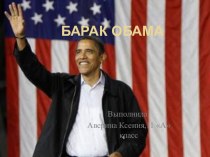- Главная
- Разное
- Бизнес и предпринимательство
- Образование
- Развлечения
- Государство
- Спорт
- Графика
- Культурология
- Еда и кулинария
- Лингвистика
- Религиоведение
- Черчение
- Физкультура
- ИЗО
- Психология
- Социология
- Английский язык
- Астрономия
- Алгебра
- Биология
- География
- Геометрия
- Детские презентации
- Информатика
- История
- Литература
- Маркетинг
- Математика
- Медицина
- Менеджмент
- Музыка
- МХК
- Немецкий язык
- ОБЖ
- Обществознание
- Окружающий мир
- Педагогика
- Русский язык
- Технология
- Физика
- Философия
- Химия
- Шаблоны, картинки для презентаций
- Экология
- Экономика
- Юриспруденция
Что такое findslide.org?
FindSlide.org - это сайт презентаций, докладов, шаблонов в формате PowerPoint.
Обратная связь
Email: Нажмите что бы посмотреть
Презентация на тему Английский язык: межкультурная коммуникация
Содержание
- 2. Английский язык: межкультурная коммуникация В. В. Жданович, Н. Б. ПолянинаКрасноярск, 2008
- 3. УДК 802.0ББК 81.2(Англ.) П54 Электронный учебно-методический комплекс по дисциплине «Английский язык: межкультурная
- 4. ОглавлениеModule 1Module 2Module 3Красноярск, 2008
- 5. Module 1Красноярск, 2008
- 6. Module 1CultureHistorically, the word derives from the
- 7. Module 1CultureHofstede (1994) defined culture as “the
- 8. Module 1"What is culture? How can
- 9. Module 1"What is culture? How can
- 10. Module 1"What is culture? How can
- 11. Module 1Types of culture● CORPORATE CULTURE (for
- 12. Module 1Types of cultureintracultural The term intracultural
- 13. Module 1‘The Culture Onion’
- 14. Module 1Iceberg Model
- 15. Module 1CULTURAL DIMENSIONSNon-verbal communicationCommunication styleTime and spacePowerThe
- 16. Module 1HofstedeGeert Hofstede, the Dutch social psychologist
- 17. Module 1HofstedeHe identified four dimensions:individualism/collectivismuncertainty avoidancepower distancemasculinity/femininity Hofstede
- 18. Module 1Individualist and Collectivist culturesIndividualist cultures stress
- 19. Module 1Individualist and Collectivist culturesCollectivist cultures tend
- 20. Module 1Individualist and Collectivist culturesIndividualist cultures stress
- 21. Module 1Individualist and Collectivist culturesIndividualist cultures tend
- 22. Module 1The Power Distance Index (PDI) is
- 23. Module 1Power Distance Index China – 80India
- 24. Module 1Cultivating the Right AttitudeIndividualism is one
- 25. Module 1Cultivating the Right AttitudeMasculinity is one
- 26. Module 1From Hofstede's research Japan was found
- 27. Module 1Uncertainty avoidance is one of the
- 28. Module 1Uncertainty Avoidance Index China – 30India
- 29. Module 1The Cultural Comparison Graph –
- 30. Module 1TrompenaarsDutchman, Fons Trompenaars, carried out research
- 31. Module 1Intercultural Competence isThe fundamental acceptance of
- 32. Module 1Benefits of cross cultural competence
- 33. Module 1Benefits of cross cultural competence
- 34. Module 1The interculturally effective personSimply stated, an
- 35. Module 1Breaking the Barriers of Intercultural Communication
- 36. Module 1Breaking the Barriers of Intercultural Communication
- 37. Module 1The widely known work of Milton
- 38. Module 1Culture shockThe symptoms of culture shock
- 39. Module 1Culture shockPositive moodMood changesNegative mood
- 40. Module 1The Cultural Adjustment ProcessThere are several
- 41. Module 1The Cultural Adjustment ProcessThere are several
- 42. Module 1
- 43. Module 1Examples of fast and slow messagesFast
- 44. Module 1Monochronic and Polychronic Cultures
- 45. Module 1 MONOCHRONIC PEOPLE
- 46. Module 1Visualization of time (Lewis 1996)PRESENTPRESENT vaguely understoodPAST visible influentialFUTURE unknowable
- 47. Module 1Values continuumTime and Its Control
- 48. Module 1Values continuumChange
- 49. Module 1Values continuumEquality
- 50. Module 1Trompenaars and Hampden-Turner in their book
- 51. Module 1The seven sub-categories of value
- 52. Module 1Value Orientations Orientation Postulated Range of VariationKluckhohn and Strodtbeck, 1961;
- 53. Module 2 Красноярск, 2008
- 54. Module 2Dimensions of non-verbal behavioureye behaviour (occulesics)facial expressionsposturelimb movements (kinesics)tone and pitch of voice (paralanguage)distance (proxemics)
- 55. Module 2Interpreting gesture clusters
- 56. Module 2Body language (kinesics)body movement, body position and facial expressions, as well as dress1.2.3.4.
- 57. Module 2Body language (kinesics)Gestures (Axtell 1991)In the
- 58. Module 2ParalanguageIt is not only words used
- 59. Module 2ParalanguageTrompenaars provides a useful diagram to illustrate some possible patterns.Anglo-SaxonLatinOriental
- 60. Module 2Edward Hall (1976, 1989) distinguished between
- 61. Module 2High-context cultureestablish relationship firstvalue personal relations
- 62. Module 2Culture profileMaking small talkSpecific
- 63. Module 2Culture profileHow much detail?Low context
- 64. Module 2Forms of addressChina - the family
- 65. Module 2Greetings Across CulturesGermany -
- 66. Module 2Greetings Across CulturesIndia
- 67. Module 2Dress for successArgentina – very formalSaudi
- 68. Module 2Asia:AfghanistanAfghanistan Azerbaijan Afghanistan Azerbaijan Bahrain Afghanistan Azerbaijan Bahrain
- 69. Module 2North & South America:ArgentinaArgentina Bolivia Argentina Bolivia Brazil Argentina
- 70. Module 2ChinaFacts and StatisticsLocation: Eastern Asia bordering
- 71. Module 2ChinaClimate: extremely diverse; tropical in south
- 72. Module 2IndiaFacts and StatisticsLocation: Southern Asia, bordering
- 73. Module 2IndiaClimate: varies from tropical monsoon in
- 74. Module 2IranFacts and StatisticsLocation: The Middle East,
- 75. Module 2IranClimate: mostly arid or semiarid, subtropical
- 76. Module 2RussiaFacts and StatisticsLocation: Northern Asia, bordering
- 77. Module 2RussiaClimate: ranges from steppes in the
- 78. Module 2TurkeyFacts and StatisticsLocation: southeastern Europe and
- 79. Module 2TurkeyClimate: temperate; hot, dry summers with
- 80. Module 2EgyptFacts and StatisticsLocation: North East Africa
- 81. Module 2EgyptClimate: desert; hot, dry summers with
- 82. Module 2GermanyFacts and StatisticsLocation: Central Europe, bordering
- 83. Module 2GermanyClimate: temperate and marine; cool, cloudy,
- 84. Module 2ItalyFacts and StatisticsLocation: Southern Europe, bordering
- 85. Module 2ItalyClimate: predominantly Mediterranean; Alpine in far
- 86. Module 2SpainFacts and StatisticsLocation: Southwestern Europe, bordering
- 87. Module 2SpainClimate: temperate; clear, hot summers in
- 88. Module 2BrasilFacts and StatisticsLocation: Eastern South America
- 89. Module 2BrasilClimate: mostly tropical, but temperate in
- 90. Module 2MexicoFacts and StatisticsLocation: Middle America, bordering
- 91. Module 2MexicoClimate: varies from tropical to desertPopulation:
- 92. Module 2JapanFacts and StatisticsLocation: Eastern Asia, island
- 93. Module 2JapanPopulation: 127,333,002 (July 2004 est.)Ethnic Make-up:
- 94. Module 3 Красноярск, 2008
- 95. Module 3Socializing
- 96. Module 3SocializingNegative perceptionThe coconut (the private sphere
- 97. Module 3SocializingPositive perceptionThe coconut sees the peach
- 98. Module 3
- 99. Module 3
- 100. Module 3Gift giving in different countries
- 101. Module 3Gift giving in different countries
- 102. Module 3Topics for Conversation
- 103. Module 3Topics for Conversation
- 104. Module 3Topics for Conversation
- 105. Module 3Topics for Conversation
- 106. Module 3Group and Individual InterestsThe defining characteristics
- 107. Module 3If you are going to a
- 108. Module 3If you are going to a
- 109. Module 3If you are going to a
- 110. Module 3If you are going to a
- 111. Module 3 Status versus Balance MotivationThe defining
- 112. Module 3If you are going to
- 113. Module 3If you are going to
- 114. Module 3If you are going to a
- 115. Module 3Entertaining for business successChina
- 116. Скачать презентацию
- 117. Похожие презентации




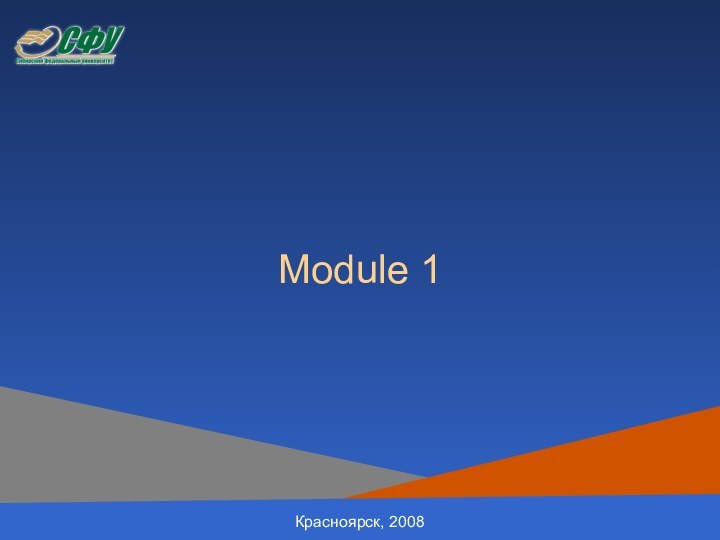






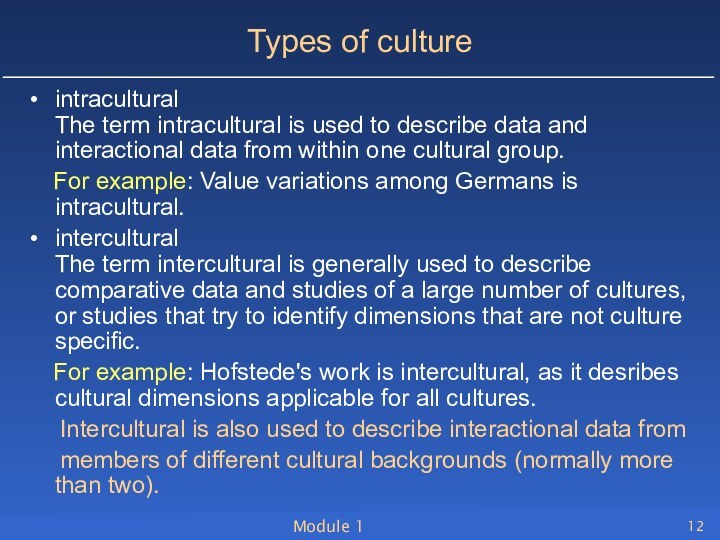







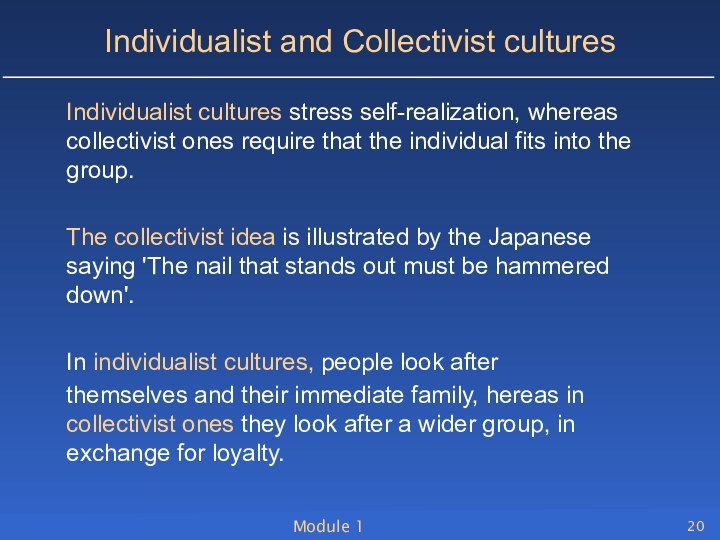


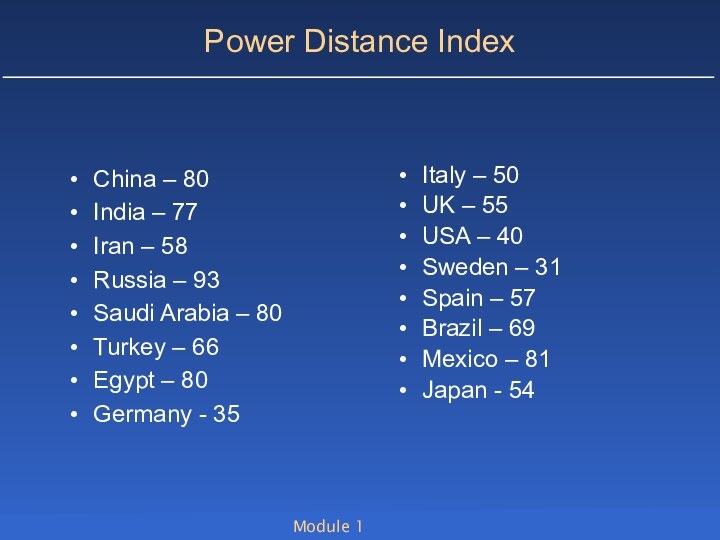










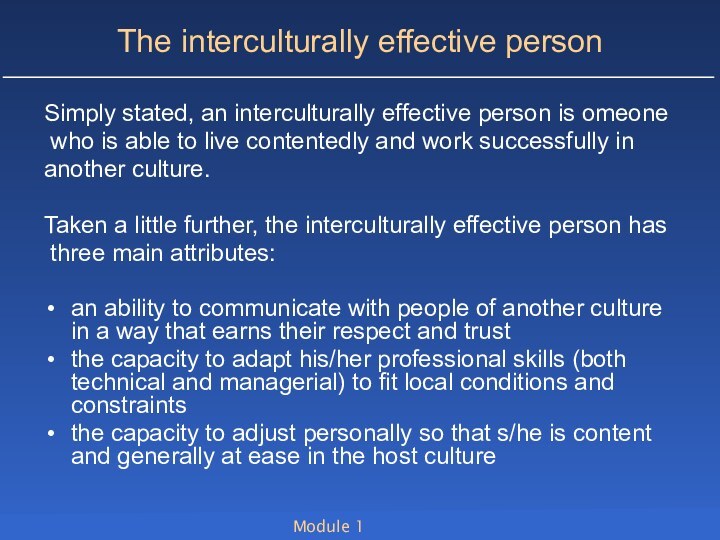








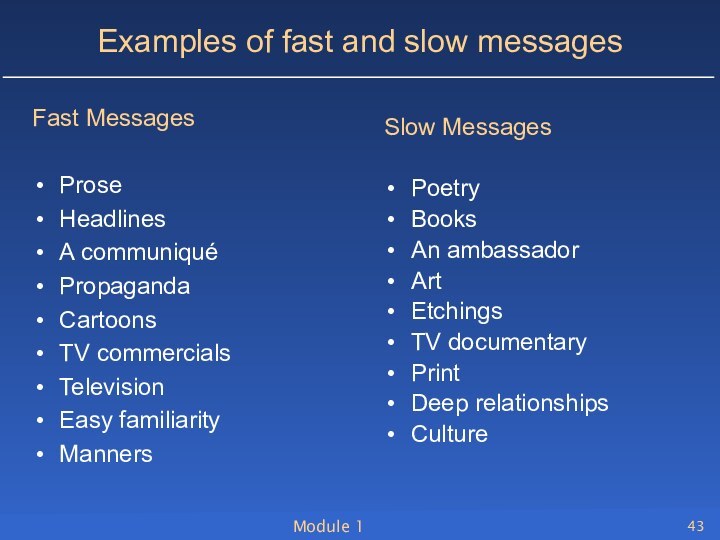

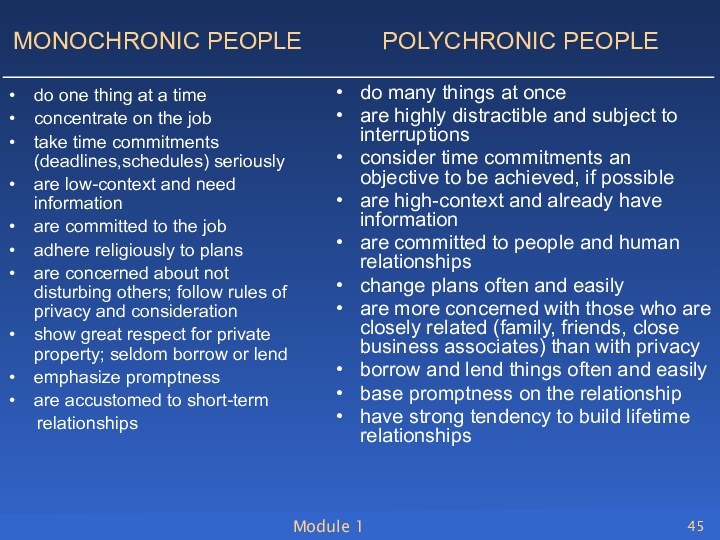



















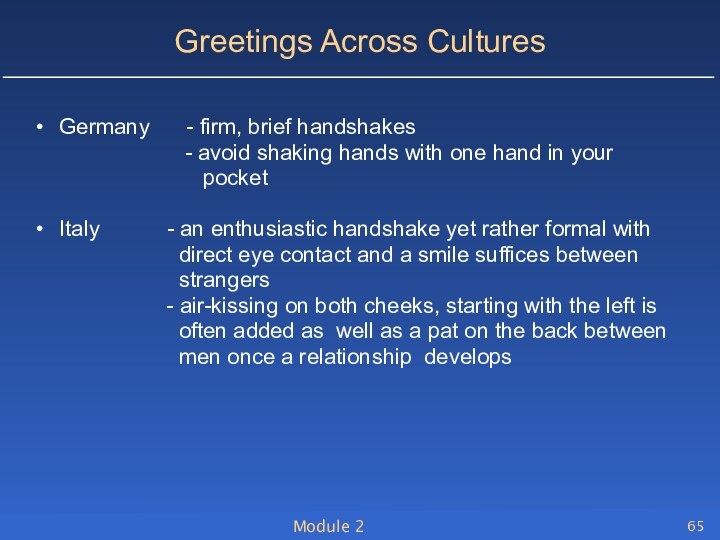
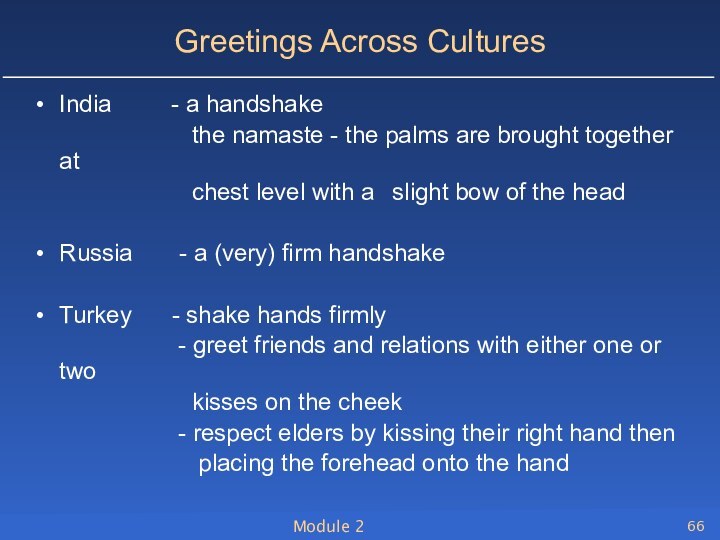






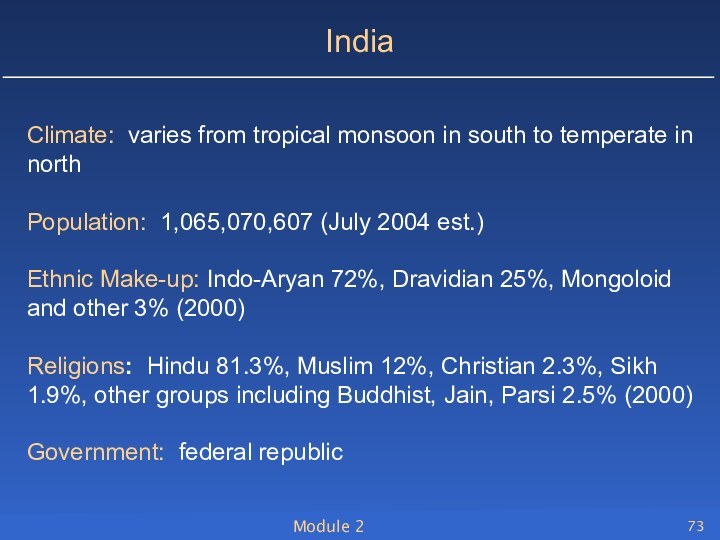





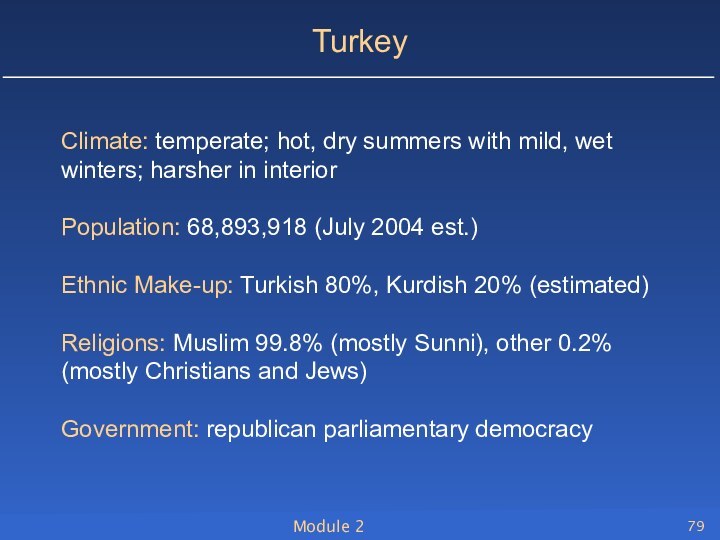








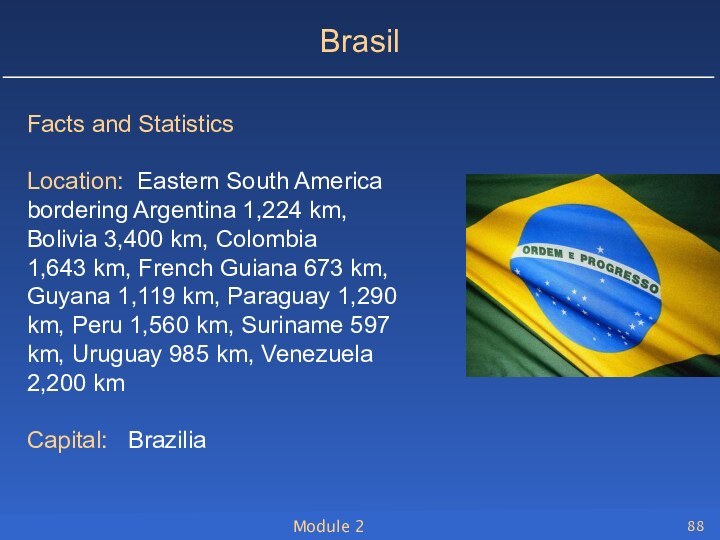




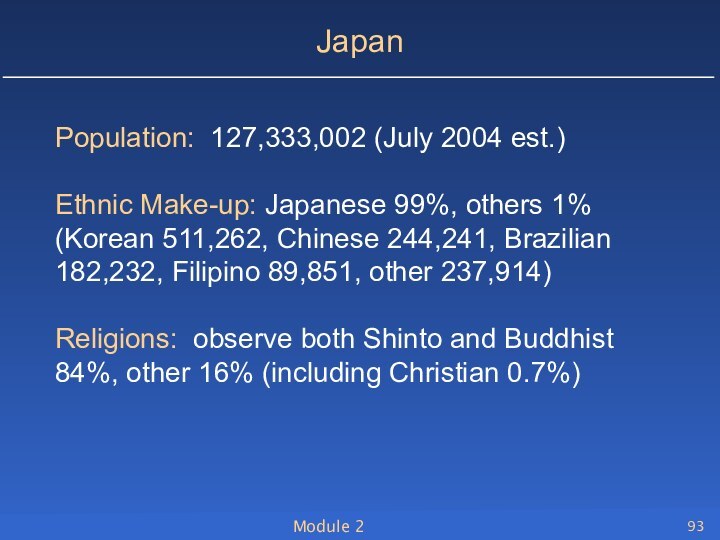















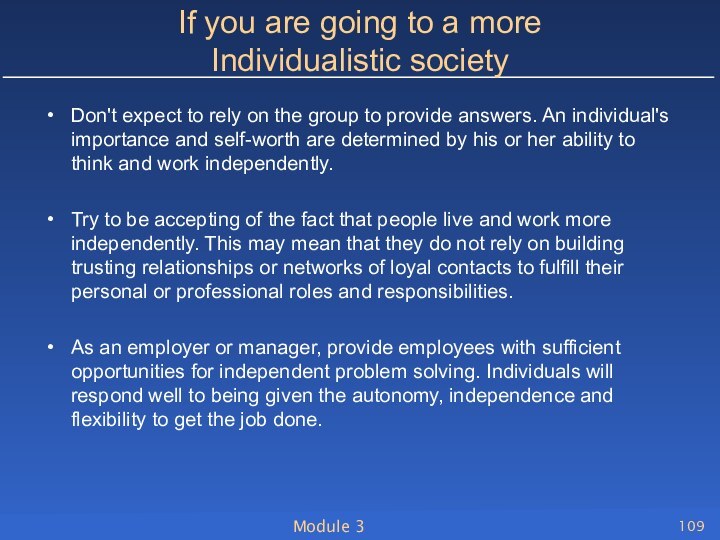







Слайд 3
УДК 802.0
ББК 81.2(Англ.)
П54
Электронный учебно-методический комплекс по дисциплине «Английский язык: межкультурная коммуникация»
подготовлен в рамках инновационной образовательной программы «Создание Института экономики и
управления в рамках СФУ как инновационной научно-образовательной системы непрерывного экономического и бизнес-образования, ориентированной на качественно новый уровень профессиональной компетенции», реализованной в ФГОУ ВПО СФУ в 2007 г.Рецензенты:
Красноярский краевой фонд науки;
Экспертная комиссия СФУ по подготовке учебно-методических комплексов дисциплин
Полянина, Н. Б.
П54 Английский язык: межкультурная коммуникация. Презентационные материалы. Версия 1.0 [Электронный ресурс] : наглядное пособие / Н. Б. Полянина, В. В. Жданович. – Электрон. дан. (3 Мб). – Красноярск : ИПК СФУ, 2008. – (Английский язык: межкультурная коммуникация : УМКД № 198-2007 / рук. творч. коллектива Е. Б. Гришаева). – 1 электрон. опт. диск (DVD). – Систем. требования : Intel Pentium (или аналогичный процессор других производителей) 1 ГГц ; 512 Мб оперативной памяти ; 3 Мб свободного дискового пространства ; привод DVD ; операционная система Microsoft Windows 2000 SP 4 / XP SP 2 / Vista (32 бит) ; Microsoft PowerPoint 2003 или выше.
ISBN 978-5-7638-1088-2 (комплекса)
ISBN 978-5-7638-0930-5 (пособия)
Номер гос. регистрации в ФГУП НТЦ «Информрегистр» 0320802555 от 03.12.2008 г. (комплекса)
Номер гос. регистрации в ФГУП НТЦ «Информрегистр» 0320802547 от 05.12.2008 г. (пособия)
Настоящее издание является частью электронного учебно-методического комплекса по дисциплине «Английский язык: межкультурная коммуникация», включающего учебную программу, конспект лекций, практикум, методические указания по самостоятельной работе, контрольно-измерительные материалы «Английский язык: межкультурная коммуникация. Банк тестовых заданий».
Представлена презентация (в виде слайдов) теоретического курса «Английский язык: межкультурная коммуникация».
Предназначено для студентов 1–2-го курсов направления подготовки бакаловров 080100.62 «Экономика» укрупненной группы 080000 «Экономика и управление (менеджмент)».
© Сибирский федеральный университет, 2008
Рекомендовано к изданию Инновационно-методическим управлением СФУ
Разработка и оформление электронного образовательного ресурса: Центр технологий электронного обучения информационно-аналитического департамента СФУ; лаборатория по разработке мультимедийных электронных образовательных ресурсов при КрЦНИТ
Содержимое ресурса охраняется законом об авторском праве. Несанкционированное копирование и использование данного продукта запрещается. Встречающиеся названия программного обеспечения, изделий, устройств или систем могут являться зарегистрированными товарными знаками тех или иных фирм.
Подп. к использованию 01.10.2008
Объем 3 Мб
Красноярск: СФУ, 660041, Красноярск, пр. Свободный, 79
Слайд 6
Module 1
Culture
Historically, the word derives from the Latin
word
‘colere’, which could be translated as ‘to build’,
‘to care for’, ‘to plant’ or ‘to cultivate’.Spencer-Oatey (2000) proposed the following definition:
Culture is a fuzzy set of attitudes, beliefs, behavioural norms, and basic assumptions and values that are shared by a group of people, and that influence each member's behaviour and his/her interpretations of the "meaning" of other people's behaviour.
Hall (1983) views culture as often subconscious:
“Culture has always dictated where to draw the line separating one thing from another. In the West a line is drawn between normal sex and rape, whereas in the Arab world is much more difficult, for a variety of reasons, to separate these two events.”
Слайд 7
Module 1
Culture
Hofstede (1994) defined
culture as “the collective
programming of the mind which distinguishes
the member of one
group or category of people from another”Kroeber & Kluckhohn definition of culture reads
‘Culture consists of patterns, explicit and implicit, of and for behaviour
acquired and transmitted by symbols, constituting the distinctive achievements of human groups, including their embodiment in artifacts; …’
the essential core of culture consists of traditional (i.e. historically derived
and selected) ideas and especially their attached values;
culture systems.
products of action
conditional elements
of future action’
Concluding, we can say that ‘culture’ consists of various factors
that are shared by a given group, and that it acts as an interpretive
frame of behaviour.
Слайд 8
Module 1
"What is culture?
How can it be
defined and what does it do?"
Quotations
O Mankind, We created
you from a single (pair) of a male and a female and made you into nations and tribes, that you may know each other.
The Quran, 49:13Culture is a thin but very important veneer that you must be careful not to scratch. People from different cultures are basically the same and respond in the same way. However, make sure that you understand their basic customs and show an interest and willingness to learn the differences between your cultures. Mike Wills
Culture is the way in which a group of people solves problems and reconciles dilemmas. E. Schein
Culture is the fabric of meaning in terms of which human beings interpret their experience and guide their action. Clifford Geertz
Слайд 9
Module 1
"What is culture?
How can it be
defined and what does it do?"
Quotations
I do not want
my house to be walled in on all sides and my windows to be stuffed. I want the cultures of all the lands to be blown about my house as freely as possible. But I refuse to be blown off my feet by any.
Mahatma Gandhi Culture is a little like dropping an Alka-Seltzer into a glass-you don't see it, but somehow it does something. Hans Magnus Enzensberger
If man is to survive, he will have learned to take a delight in the essential differences between men and between cultures. He will learn that differences in ideas and attitudes are a delight, part of life's exciting variety, not something to fear. Gene Roddenberry
On a group of theories one can found a school; but on a group of values one can found a culture, a civilization, a new way of living together among men. Ignazio Silone
Слайд 10
Module 1
"What is culture?
How can it be
defined and what does it do?"
Quotations
A culture may be
conceived as a network of beliefs and purposes in which any string in the net pulls and is pulled by the others, thus perpetually changing the configuration of the whole.
Jacques Barzun Culture is the name for what people are interested in, their thoughts, their models, the books they read and the speeches they hear, their table-talk, gossip, controversies, historical sense and scientific training, the values they appreciate, the quality of life they admire. All communities have a culture. It is the climate of their civilization. Walter Lippmann
Culture means control over nature. Johan Huizinga
Culture is roughly anything we do and the monkeys don't. Lord Raglan
Слайд 11
Module 1
Types of culture
● CORPORATE CULTURE (for example,
the culture of Microsoft)
● PROFESSIONAL CULTURE (for example, the
culture of lawyers or doctors)● GENDER CULTURE (for example, the different cultures of men and women)
● AGE CULTURE (for example, the culture of young, middle-aged, and old people)
● RELIGIOUS CULTURE (for example, Catholicsm, Islam)
● REGIONAL CULTURE (for example, Northern and Southern Italy)
● CLASS CULTURE (for example, working class, middle class, and upper class)
factors that bind people together
Слайд 12
Module 1
Types of culture
intracultural
The term intracultural is used
to describe data and interactional data from within one
cultural group.For example: Value variations among Germans is intracultural.
intercultural The term intercultural is generally used to describe comparative data and studies of a large number of cultures, or studies that try to identify dimensions that are not culture specific.
For example: Hofstede's work is intercultural, as it desribes cultural dimensions applicable for all cultures.
Intercultural is also used to describe interactional data from
members of different cultural backgrounds (normally more than two).
Слайд 15
Module 1
CULTURAL DIMENSIONS
Non-verbal communication
Communication style
Time and space
Power
The individual
and the group
Uncertainty
Nature
BUSINESS COMMUNICATION
Managing people
Negotiating
Socializing
Giving presentations
Advertising
Applying for a job
Слайд 16
Module 1
Hofstede
Geert Hofstede, the Dutch social psychologist and
engineer, collected data from employees of IBM in the
late 1960s and early 1970s.His database covered employees working in 72 of the company's national subsidiaries, who followed 38 different occupations, and spoke 20 languages.
More than 116,000 questionnaires were distributed, each with over 100 questions.
Hofstede published his findings in 1980 in a groundbreaking book called Culture's Consequences, which has had an enormous influence on the further development
of the field.
Слайд 17
Module 1
Hofstede
He identified four dimensions:
individualism/collectivism
uncertainty avoidance
power distance
masculinity/femininity
Hofstede later
extended his work to include a fifth dimension: LONG-TERM
ORIENTATION . Although generally highly respected, his work has been criticized for concentrating too much on national cultures.
Слайд 18
Module 1
Individualist and Collectivist cultures
Individualist cultures stress self-realization,
whereas collectivist ones require that the individual fits into
the group.The collectivist idea is illustrated by the Japanese saying 'The nail that stands out must be hammered down'.
In individualist cultures, people look after
themselves and their immediate family, whereas in collectivist ones they look after a wider group, in exchange for loyalty.
Слайд 19
Module 1
Individualist and Collectivist cultures
Collectivist cultures tend to
have the following features:
identity is based on the social
network to which you belongharmony should be maintained
communication is high context
employer—employee relationships are like a family link
decisions on employing people take the group into account
management is management of groups
relationship is more important than task.
(Adapted from Hofstede 1991:67)
Слайд 20
Module 1
Individualist and Collectivist cultures
Individualist cultures stress self-realization,
whereas collectivist ones require that the individual fits into
the group.The collectivist idea is illustrated by the Japanese saying 'The nail that stands out must be hammered down'.
In individualist cultures, people look after
themselves and their immediate family, hereas in collectivist ones they look after a wider group, in exchange for loyalty.
Слайд 21
Module 1
Individualist and Collectivist cultures
Individualist cultures tend to
have the following features:
identity is based on the individual
honest
people speak their mindcommunication is low context
employer-employee relationships are based on a contract
decisions to employ people take skills into account
management is management of individuals
task is more important than relationship.
(Adapted from Hofstede 1991:67)
Слайд 22
Module 1
The Power Distance Index (PDI) is one
of the five intercultural dimensions developed by Hofstede. This
cultural dimension looks at how much a culture does or does not value hierarchical relationships and respect for authority. Below is a country list illustrating the scores compiled by Professor Geert Hofstede with regards to the dimension named
Слайд 23
Module 1
Power Distance Index
China – 80
India –
77
Iran – 58
Russia – 93
Saudi Arabia – 80
Turkey –
66Egypt – 80
Germany - 35
Italy – 50
UK – 55
USA – 40
Sweden – 31
Spain – 57
Brazil – 69
Mexico – 81
Japan - 54
Слайд 24
Module 1
Cultivating the Right Attitude
Individualism is one of
the five intercultural dimensions developed by Hofstede. This cultural
dimension looks at how much a culture emphasises the rights of the individual versus those of the group (whether it be family, tribe, company, etc).Individualist cultures include the United States and much of Western Europe, where personal achievements aremphasised.
Collectivist cultures, such as China, Korea, and Japan, emphasize the group such as the family and at work this manifests in a strong work group mentality.
Слайд 25
Module 1
Cultivating the Right Attitude
Masculinity is one of
the five intercultural dimensions developed by Hofstede. It is
also one of the least understood as many people tend to associate it with masculinity literally. In essence it looks at the degree to which 'masculine' values like competitiveness and the acquisition of wealth are valued over 'feminine' values like relationship building and quality of life.
Слайд 26
Module 1
From Hofstede's research Japan was found to
be
the world's most masculine society, with a
rating of
95. Sweden was the most feminine with a rating of 5.Other examples of "masculine" cultures include the USA, the Germany, Ireland and Italy.
"Feminine" cultures include Spain, Thailand, Korea, Portugal and the Middle East.
Слайд 27
Module 1
Uncertainty avoidance is one of the five
intercultural dimensions developed by Hofstede. In essence this cultural
dimension measures a country or culture's preference for strict laws and regulations over ambiguity and risk. According to the Hofstede's findings Greece is the most risk-averse culture while Singapore the least. Generally speaking Protestant countries and those with Chinese influences score low. Catholic, Buddhist and Arabic speaking countries tend to score high in uncertainty avoidance. Below is a сountry list illustrating the scores compiled by Professor Geert Hofstede with regards to the dimension named
Слайд 28
Module 1
Uncertainty Avoidance Index
China – 30
India –
40
Iran – 58
Russia – 95
Saudi Arabia – 68
Turkey –
85Egypt – 68
Germany - 65
Italy – 75
UK – 35
USA – 46
Sweden – 29
Spain – 86
Brazil – 76
Mexico – 82
Japan - 92
Слайд 29
Module 1
The Cultural Comparison Graph –
he areas
where the two cultures differ greatly
PDI (Power Distance
Index) - the degree of equality or inequality between people in a country's society. IDV (Individualism) - the degree to which a culture values and reinforces the importance of the individual as opposed to the group.
MAS (Masculinity) - the degree to which a culture reinforces the traditional role of males vs females.
VAI (Uncertainty Avoidance) - the level of tolerance for uncertainty and ambiguity within a culture.
China/Italy
Слайд 30
Module 1
Trompenaars
Dutchman, Fons Trompenaars, carried out research on
15,000 managers from 28 countries. His findings can be
found in the Very successful book, Riding the Waves of
Culture (Trompenaars and Hampden-Turner 1997).
He describes three main cultural dimensions:
RELATIONSHIPS WITH PEOPLE
ATTITUDE TO TIME
ATTITUDE TO THE ENVIRONMENT
Слайд 31
Module 1
Intercultural Competence is
The fundamental acceptance of people
who are different to oneself outside one's own culture.
The
ability to interact with them in a genuinely constructive manner which is free of negative attitude (e.g. prejudice, defensiveness, apathy, aggression etc.) The ability to create a synthesis, something which is neither "mine" nor "yours", but which is genuinely new and would not have been possible had we not combined our different backgrounds and approaches.
Слайд 32
Module 1
Benefits of cross cultural competence
training
Self-Awareness: People
learn about their own strengths, weaknesses, prejudices and preconceptions.
Builds Confidence: Cultural competency training promotes self-confidence in individuals and teams through empowerment.
Breaks down Barriers: Our cultural training demystifies 'the other' and creates awareness.
Builds Trust: Awareness leads to dialogue which leads to understanding which results in trust.
Motivates: Through self-analysis people begin to recognise areas in which they need to improve and become motivated to develop.
Слайд 33
Module 1
Benefits of cross cultural competence
training
Opens Horizons:
Cultural competency training helps people think outside the box.
Develops Skills: Participants develop better 'people skills' - they begin to deal with people with sensitivity and empathy.
Develops Listening Skills: By becoming good listeners, people become good communicators.
Using Common Ground: Rather than focus on differences participants move towards creating a shared space.
Career Development: Cross cultural competence training enhances people's skills and therefore future employment opportunities.
Слайд 34
Module 1
The interculturally effective person
Simply stated, an interculturally
effective person is omeone
who is able to live
contentedly and work successfully in another culture.
Taken a little further, the interculturally effective person has
three main attributes:
an ability to communicate with people of another culture in a way that earns their respect and trust
the capacity to adapt his/her professional skills (both technical and managerial) to fit local conditions and constraints
the capacity to adjust personally so that s/he is content and generally at ease in the host culture
Слайд 35
Module 1
Breaking the Barriers of Intercultural Communication
1.
Break Assumptions
Assumptions are beliefs rather than objective truth
and are
usually influenced by a number of subjective factors.
2. Empathise
Through putting yourself in someone else's shoes
you come to see or appreciate their oint of view.
3. Involve
Involving others in tasks or decision making
empowers and builds strong relationships, a
more creative approach to problem solving as it
incorporates different points of view.
Слайд 36
Module 1
Breaking the Barriers of Intercultural Communication
4.
Discourage Herd Mentality
It encourages creativity, innovation and advancement
5. Shun
Insensitive BehaviourBy attacking someone's person, you attack their culture
and therefore their dignity. This can only be divisive.
6. Be Wise
Intercultural communication is essentially founded upon
wisdom, i.e. showing maturity of thought and action in
dealing with people.
Слайд 37
Module 1
The widely known work of Milton Bennett
helps to elucidate the process
of adaptation to a new
culture. In his work, Developmental Model ofIntercultural Sensitivity, 1993, he describes six main stages in the
development of intercultural sensitivity:
denial
defensiveness
minimization
acceptance
adaptation
integration
Слайд 38
Module 1
Culture shock
The symptoms of culture shock can
include:
strain
sense of loss
anxiety
helplessness
Physical symptoms can include:
headaches
sleeplessness
desire for comfort foods
(for example, chocolate)excessive consumption of alcohol
confusion
feeling rejected
obsession with hygien
overeating
stomach pains
Phases of culture shock (Marx 1999)
Слайд 40
Module 1
The Cultural Adjustment Process
There are several stages
most newcomers go
through in adjusting to a new
culture.1. Fun: The excitement and adventure of experiencing new people, things, and opportunities.
2. Flight: The urge to avoid everything and everyone that is different. This stage is characterized by symptoms similar to those seen in cases of clinical depression, but as a reaction to culture shock.
Слайд 41
Module 1
The Cultural Adjustment Process
There are several stages
most newcomers go through in adjusting to a new
culture.3. Fight: The temptation to judge people or things that may be different in a negative light. At this stage, one wrestles with the influence of the new culture while resisting giving up one's original cultural identity. Hopefully, a blend will emerge that fits you well.
4. Fit: Willingness to understand, to embrace, and to creatively interact with the new culture. At this final stage, adaptation to the local culture has been made and hopefully one has made a decent adjustment.
Слайд 43
Module 1
Examples of fast and slow messages
Fast Messages
Prose
Headlines
A
communiqué
Propaganda
Cartoons
TV commercials
Television
Easy familiarity
Manners
Slow Messages
Poetry
Books
An ambassador
Art
Etchings
TV documentary
Print
Deep relationships
Culture
Слайд 45
Module 1
MONOCHRONIC PEOPLE
POLYCHRONIC PEOPLE
do one thing at a time
concentrate on
the jobtake time commitments (deadlines,schedules) seriously
are low-context and need information
are committed to the job
adhere religiously to plans
are concerned about not disturbing others; follow rules of privacy and consideration
show great respect for private property; seldom borrow or lend
emphasize promptness
are accustomed to short-term
relationships
do many things at once
are highly distractible and subject to interruptions
consider time commitments an objective to be achieved, if possible
are high-context and already have information
are committed to people and human relationships
change plans often and easily
are more concerned with those who are closely related (family, friends, close business associates) than with privacy
borrow and lend things often and easily
base promptness on the relationship
have strong tendency to build lifetime relationships
Слайд 46
Module 1
Visualization of time (Lewis 1996)
PRESENT
PRESENT vaguely understood
PAST
visible influential
FUTURE unknowable
Слайд 47
Module 1
Values continuum
Time and Its Control
---------
Human Interaction(punctuality, keeping schedules) (relations between people most
important)
Personal Control over ---------- Fate
the Environment (course of events is beyond power or
(Each person should control control)
is beyond power whatever
might affect him)
Self-Help ---------- Birthright Inheritance
(a person's achievement (privilege of birth; inherited
on his own) wealth or social position)
Слайд 48
Module 1
Values continuum
Change
------------------ Tradition
(connotes improvement, (honours rich and ancient
development, growth and heritage/ civilization)
progress)
Future Orientation ------------------- Past orientation
(looking to future as better, (past kept alive, today’s
planning and goal setting) world seen as continuity
of past)
Individualism/Privacy ------------------- Group’s welfare
Competition ------------------- Cooperation
Слайд 49
Module 1
Values continuum
Equality
--------------- Hierarchy/Rank/System
(position in society clearly define
by rank/status)
Informality -------------- Formality
Practicality/Efficiency -------------- Idealism
(philosophical, knowledge for
knowledge’s sake)
Directness/Openness/
Honesty --------------- Indirectness/Ritual/”Face”
Action/Work Orientation --------------- “Being” Orientation
(action is superior to inaction) (state of inaction is acceptable,
concern with the nature of
existence and inner self)
Materialism/Acquisitiveness -------------- Spiritualism/Detachment
Слайд 50
Module 1
Trompenaars and Hampden-Turner in their book
“Riding
The Waves of Culture” (1997), identify
seven value orientations.
Some of these value orientations can be regarded
as nearly identical to Hofstede’s dimensions.
Others offer a somewhat different perspective.
Слайд 51
Module 1
The seven sub-categories of value
dimensions identified
were
Universalism
versus Particularism
Communitarianism versus Individualism
Neutral versus Emotional
Defuse versus Specific cultures
Achievement versus Ascription
Human-Time relationship and Human-Nature relationship
Слайд 52
Module 1
Value Orientations
Orientation Postulated Range
of Variation
Kluckhohn and Strodtbeck, 1961;
Слайд 54
Module 2
Dimensions of non-verbal behaviour
eye behaviour (occulesics)
facial expressions
posture
limb
movements (kinesics)
tone and pitch of voice (paralanguage)
distance (proxemics)
Слайд 56
Module 2
Body language (kinesics)
body movement, body position and
facial expressions, as well as dress
1.
2.
3.
4.
Слайд 57
Module 2
Body language (kinesics)
Gestures (Axtell 1991)
In the USA,
this means 'A-OK', in France, 'zero', in Japan, 'money',
and in Tunisia, 'I'll kill you.'In Germany, this means 'two', or victory; in Britain, it means 'victory' if the palm of the hand is facing outwards, but is a rude gesture if the palm is facing inwards.
In Greece and Italy, this means 'goodbye', in the USA, it means 'come here'.
In many cultures, this means that everything is fine.
Слайд 58
Module 2
Paralanguage
It is not only words used that
convey a message, but also
range of other factors, such
as our tone of voice, and the speed or pitch of what we say.
Intonation patterns and tone of voice vary widely in different
cultures. What in one culture sounds like a hysterical
argument, in another would be considered to be the norm
for a reasonable discussion. Geoff Woodside came to the
wrong conclusion about the tone ofthe conversation when
he judged the sound of people speaking in Polish by the
Very different intonation patterns in English.
Слайд 59
Module 2
Paralanguage
Trompenaars provides a useful diagram to illustrate
some possible patterns.
Anglo-Saxon
Latin
Oriental
Слайд 60
Module 2
Edward Hall (1976, 1989) distinguished between high-context
and low-context cultures. High-context culture: a culture in which people
tend to rely heavily on a range of social and non-verbal dues when communicating with others and interpreting their messages. Low-context culture: a culture in which people tend to focus on the written and spoken word when communicating with others and interpreting their messages.
Слайд 61
Module 2
High-context culture
establish relationship first
value personal relations and
goodwill
agreement based on trust
slow and ritualistic negotiations
Low-context culture
get
down to business first value expertise and performance
agreement based on legal contract
fast and efficient negotiations
Слайд 62
Module 2
Culture profile
Making small talk
Specific
Diffuse
Attitudes to time
Monochronic Synchronic
Team-working
Individualist Collectivist
Questioning style
Direct Indirect
Слайд 63
Module 2
Culture profile
How much detail?
Low context
High context
Attitudes to risk
High uncertainty avoidance Low uncertainty avoidance
Showing respect
Achievement Status
Слайд 64
Module 2
Forms of address
China - the family name
only for business purposes - the surname,
together with a titleIndia - the appropriate formal title
Italy - wait until invited to move to a first name basis
Spain - the basic titles of courtesy followed by the surname
Sweden - his/her first name
Japan - first names are usually reserved for family and close friends even if you are on a first name basis, it is appropriate to use his or her last name in the presence of colleagues use courtesy titles in addition to last names use professional titles in the place of actual names
Слайд 65
Module 2
Greetings Across Cultures
Germany - firm,
brief handshakes
- avoid shaking hands with one hand in your Italy - an enthusiastic handshake yet rather formal with
direct eye contact and a smile suffices between
strangers
- air-kissing on both cheeks, starting with the left is
often added as well as a pat on the back between
men once a relationship develops
Слайд 66
Module 2
Greetings Across Cultures
India
- a handshake
the namaste - the palms are brought together at chest level with a slight bow of the head
Russia - a (very) firm handshake
Turkey - shake hands firmly
- greet friends and relations with either one or two
kisses on the cheek
- respect elders by kissing their right hand then
placing the forehead onto the hand
Слайд 67
Module 2
Dress for success
Argentina – very formal
Saudi Arabia
– modest quality
China – unpretentious
Russia – conservative
Brazil – casual
but stylishFrance – stylish; best
Spain - con elegancia
“All choices of clothing, particularly the quick and simple ones involve allying oneself with others who have made the same choice.”
Ann Hollander
Слайд 68
Module 2
Asia:
AfghanistanAfghanistan Azerbaijan Afghanistan Azerbaijan Bahrain Afghanistan Azerbaijan Bahrain BangladeshAfghanistan
Azerbaijan Bahrain Bangladesh China
Georgia India IranIran KuwaitIran Kuwait PakistanIran Kuwait Pakistan
Russia Iran Kuwait Pakistan Russia Saudi ArabiaArabia Sri LankaArabia Sri Lanka Turkey
Africa:
AlgeriaAlgeria EgyptAlgeria Egypt Morocco Algeria Egypt Morocco South Africa Algeria Egypt Morocco South Africa Tunisia
Europe:
Austria Austria Belgium Austria Belgium Bulgaria Austria Belgium Bulgaria Cyprus Austria Belgium Bulgaria Cyprus Czech Republic
Denmark Denmark EstoniaDenmark Estonia Finland Denmark Estonia Finland FranceDenmark Estonia Finland France Germany
GreeceGreece HungaryGreece Hungary Italy Greece Hungary Italy LithuaniaGreece Hungary Italy Lithuania LuxembourgGreece Hungary Italy Lithuania Luxembourg Neth
erlands erlands Norwayerlands Norway Portugal erlands Norway Portugal Romania erlands Norway Portugal Romania Spain
Слайд 69
Module 2
North & South America:
ArgentinaArgentina Bolivia Argentina Bolivia Brazil Argentina Bolivia
Brazil ChileArgentina Bolivia Brazil Chile Colombia
Dominican Republic Jamaica Jamaica Mexico Jamaica Mexico Venezuela
East
Asia & Australasia:AustraliaAustralia Cambodia Australia Cambodia HongKong Australia Cambodia HongKong Indonesia
Japan Japan New Zealand Japan New Zealand Philippines Japan New Zealand Philippines Singapore
South Korea South Korea ThailandSouth Korea Thailand Vietnam
Слайд 70
Module 2
China
Facts and Statistics
Location: Eastern Asia bordering Afghanistan
76 km, Bhutan 470 km, Burma 2,185 km, India
3,380 km, Kazakhstan 1,533 km, North Korea 1,416 km, Kyrgyzstan 858 km, Laos 423 km, Mongolia 4,677 km, Nepal 1,236 km, Pakistan 523 km, Russia (northeast) 3,605 km, Russia (northwest) 40 km, Tajikistan 414 km, Vietnam 1,281 kmCapital: Beijing
Слайд 71
Module 2
China
Climate: extremely diverse; tropical in south to
subarctic in north
Population: 1,298,847,624 (July 2004 est.)
Ethnic Make-up: Han
Chinese 91.9%, Zhuang, Uygur, Hui, Yi, Tibetan, Miao, Manchu, Mongol, Buyi, Korean, and other nationalities 8.1%Religions: Daoist (Taoist), Buddhist, Muslim 1%-2%, Christian 3%-4%
Government: Communist state
Слайд 72
Module 2
India
Facts and Statistics
Location: Southern Asia, bordering Bangladesh
4,053 km, Bhutan 605 km, Burma 1,463 km, China
3,380 km, Nepal 1,690 km, Pakistan 2,912 kmCapital: New Delhi
Слайд 73
Module 2
India
Climate: varies from tropical monsoon in south
to temperate in north
Population: 1,065,070,607 (July 2004 est.)
Ethnic Make-up:
Indo-Aryan 72%, Dravidian 25%, Mongoloid and other 3% (2000)Religions: Hindu 81.3%, Muslim 12%, Christian 2.3%, Sikh 1.9%, other groups including Buddhist, Jain, Parsi 2.5% (2000)
Government: federal republic
Слайд 74
Module 2
Iran
Facts and Statistics
Location: The Middle East, bordering
Afghanistan 936 km, Armenia 35 km, Azerbaijan-proper 432 km,
Azerbaijan-Naxcivan exclave 179 km, Iraq 1,458 km, Pakistan 909 km, Turkey 499 km, Turkmenistan 992 kmCapital: Tehran
Слайд 75
Module 2
Iran
Climate: mostly arid or semiarid, subtropical along
Caspian coast
Population: 69,018,924 (July 2004 est.)
Ethnic Make-up: Persian 51%,
Azeri 24%, Gilaki and Mazandarani 8%, Kurd 7%, Arab 3%, Lur 2%,
Baloochi 2%, Turkmen 2%, other 1%Religions: Shi'a Muslim 89%, Sunni Muslim 9%, Zoroastrian, Jewish, Christian, and Baha'i 2%
Government: Islamic republic
Слайд 76
Module 2
Russia
Facts and Statistics
Location: Northern Asia, bordering Azerbaijan
284 km, Belarus 959 km, China (southeast) 3,605 km,
China (south) 40 km, Estonia 294 km, Finland 1,313 km, Georgia 723 km, Kazakhstan 6,846 km, North Korea 19 km, Latvia 217 km, Lithuania (Kaliningrad Oblast) 227 km, Mongolia 3,485 km, Norway 196 km, Poland (Kaliningrad Oblast) 206 km, Ukraine 1,576 kmCapital: Moscow
Слайд 77
Module 2
Russia
Climate: ranges from steppes in the south
through humid continental in much of European Russia; subarctic
in Siberia to tundra climate in the polar north; winters vary from cool along Black Sea coast to frigid in Siberia; summers vary from warm in the steppes to cool along Arctic coastPopulation: 143,782,338 (July 2004 est.)
Ethnic Make-up: Russian 81.5%, Tatar 3.8%, Ukrainian 3%, Chuvash 1.2%, Bashkir 0.9%, Belarusian 0.8%, Moldavian 0.7%, other 8.1% (1989)
Religions: Russian Orthodox, Muslim, other
Government: federation
Слайд 78
Module 2
Turkey
Facts and Statistics
Location: southeastern Europe and southwestern
Asia (that portion of Turkey west of the Bosporus
is geographically part of Europe), bordering the Black Sea, between Bulgaria and Georgia, and bordering the Aegean Sea and the Mediterranean Sea, between Greece and SyriaCapital: Ankara
Слайд 79
Module 2
Turkey
Climate: temperate; hot, dry summers with mild,
wet winters; harsher in interior
Population: 68,893,918 (July 2004 est.)
Ethnic
Make-up: Turkish 80%, Kurdish 20% (estimated)Religions: Muslim 99.8% (mostly Sunni), other 0.2% (mostly Christians and Jews)
Government: republican parliamentary democracy
Слайд 80
Module 2
Egypt
Facts and Statistics
Location: North East Africa bordering
Palestine (Gaza Strip) 11 km, Israel 266 km, Libya
1,115 km, Sudan 1,273 kmCapital: Cairo
Слайд 81
Module 2
Egypt
Climate: desert; hot, dry summers with moderate
winters
Population: 76,117,421 (July 2004 est.)
Ethnic Make-up: Eastern Hamitic stock
(Egyptians, Bedouins, and Berbers) 99%, Greek, Nubian, Armenian, other European (primarily Italian and French) 1%Religions: Muslim (mostly Sunni) 94%, Coptic Christian and other 6%
Government: republic
Слайд 82
Module 2
Germany
Facts and Statistics
Location: Central Europe, bordering Austria
784 km, Belgium 167 km, Czech Republic 646 km,
Denmark 68 km, France 451 km, Luxembourg 138 km, Netherlands 577 km, Poland 456 km,Switzerland334 km
Capital: Berlin
Слайд 83
Module 2
Germany
Climate: temperate and marine; cool, cloudy, wet
winters and summers; occasional warm mountain (foehn) wind
Population: 82,424,609
(July 2004 est.)Ethnic Make-up: German 91.5%, Turkish 2.4%, other 6.1% (made up largely of Greek, Italian, Polish, Russian, Serbo-Croatian, Spanish)
Religions: Protestant 34%, Roman Catholic 34%, Muslim 3.7%, unaffiliated or other 28.3%
Government: federal republic
Слайд 84
Module 2
Italy
Facts and Statistics
Location: Southern Europe, bordering Austria
430 km, France 488 km, Holy See (Vatican City)
3.2 km, San Marino 39 km, Slovenia 232 km, Switzerland 740 kmCapital: Rome
Слайд 85
Module 2
Italy
Climate: predominantly Mediterranean; Alpine in far north;
hot, dry in south
Population: 58,057,477 (July 2004 est.)
Ethnic Make-up:
Italian (includes small clusters of German-, French-, and Slovene-Italians in the north
and Albanian-Italians and Greek-Italians in the south)Religions: predominately Roman Catholic with mature Protestant and Jewish communities and a growing Muslim immigrant community
Government: republic
Слайд 86
Module 2
Spain
Facts and Statistics
Location: Southwestern Europe, bordering the
Bay of Biscay, Mediterranean Sea, North Atlantic Ocean, and
Pyrenees Mountains, southwest of FranceCapital: Madrid
Слайд 87
Module 2
Spain
Climate: temperate; clear, hot summers in interior,
more moderate and cloudy along coast; cloudy, cold winters
in interior, partly cloudy and cool along coastPopulation: 40,280,780 (July 2004 est.)
Ethnic Make-up: composite of Mediterranean and Nordic types
Religions: Roman Catholic 94%, other 6%
Government: parliamentary monarchy
Слайд 88
Module 2
Brasil
Facts and Statistics
Location: Eastern South America bordering
Argentina 1,224 km, Bolivia 3,400 km, Colombia 1,643 km,
French Guiana 673 km, Guyana 1,119 km, Paraguay 1,290 km, Peru 1,560 km, Suriname 597 km, Uruguay 985 km, Venezuela 2,200 kmCapital: Brazilia
Слайд 89
Module 2
Brasil
Climate: mostly tropical, but temperate in south
Population:
184,101,109
Ethnic Make-up: white (includes Portuguese, German, Italian, Spanish, Polish)
55%, mixed white and
black 38%, black 6%, other (includes Japanese, Arab, Amerindian) 1%Religions: Roman Catholic (nominal) 80%
Government: federative republic
Слайд 90
Module 2
Mexico
Facts and Statistics
Location: Middle America, bordering the
Caribbean Sea and the Gulf of Mexico, between Belize
and the US and bordering the North Pacific Ocean, between Guatemala and the USCapital: Mexico City
Слайд 91
Module 2
Mexico
Climate: varies from tropical to desert
Population: 104,959,594
(July 2004 est.)
Ethnic Make-up: mestizo (Amerindian-Spanish) 60%, Amerindian or
predominantly Amerindian 30%,
white 9%, other 1%Religions: nominally Roman Catholic 89%, Protestant 6%, other 5%
Government: federal republic
Слайд 92
Module 2
Japan
Facts and Statistics
Location: Eastern Asia, island chain
between the North Pacific Ocean and the Sea of
Japan, east of the Korean Peninsula.Capital: Tokyo
Слайд 93
Module 2
Japan
Population: 127,333,002 (July 2004 est.)
Ethnic Make-up: Japanese
99%, others 1% (Korean 511,262, Chinese 244,241, Brazilian 182,232,
Filipino 89,851, other 237,914)Religions: observe both Shinto and Buddhist 84%, other 16% (including Christian 0.7%)
Слайд 96
Module 3
Socializing
Negative perception
The coconut (the private sphere is
pretty large and hard to get into) sees the
peach as:superficial not to be taken seriously, childish
too playful insincere
The peach (the public sphere is relatively large and the private sphere is reserved) sees the coconut as:
unapproachable hard
stiff impolite
lacking humour gruff
Слайд 97
Module 3
Socializing
Positive perception
The coconut sees the peach as:
open
enthusiasticfriendly humorous
flexible
The peach sees the coconut as:
reliable proper
clear honest
trustworthy
(adapted from Zaninelli 1994: 97-100)
Слайд 106
Module 3
Group and Individual Interests
The defining characteristics of
this dimension are:
The relative importance of individual rights
vs. the greater good of the group or society The source of an individual's identity and loyalties
The value of individual contributions vs. teamwork in accomplishing and rewarding business goals
The roles and responsibilities of individuals to other family members
Appropriate levels of assertion and self-promotion within a society
Definition: Defines the importance of individual endeavors vs.
collective undertakings.
Слайд 107
Module 3
If you are going to a more
Group-oriented society
Individuals feel a strong sense of responsibility for
other family members. Family needs will take precedence over professional obligations. People value their role as a family or team member and identify themselves first as part of a group, then as an individual. They may be uncomfortable if the focus is placed too much on them.
Remember that individuals do not take sole credit for accomplishments, even when credit is primarily due to one person. Instead, employees are rewarded in groups. Do not single people to answer questions, provide ideas or complete a project.
Слайд 108
Module 3
If you are going to a more
Group-oriented society
Promotions will draw heavily on seniority and experience
- not performance and achievement. Decision making may be a slow process, as many individuals across the hierarchy will need to be consulted. However, once consensus is reached, implementation is usually quite rapid.
Слайд 109
Module 3
If you are going to a more
Individualistic society
Don't expect to rely on the group to
provide answers. An individual's importance and self-worth are determined by his or her ability to think and work independently. Try to be accepting of the fact that people live and work more independently. This may mean that they do not rely on building trusting relationships or networks of loyal contacts to fulfill their personal or professional roles and responsibilities.
As an employer or manager, provide employees with sufficient opportunities for independent problem solving. Individuals will respond well to being given the autonomy, independence and flexibility to get the job done.
Слайд 110
Module 3
If you are going to a more
Individualistic society
Be aware that it is culturally appropriate for
employees to identify opportunities to demonstrate their abilities and "make their mark." In meetings and presentations, individuals will strive to distinguish themselves. Presentations tend to be dynamic and interactive. Remember that individual expression is encouraged and will be demonstrated in people's appearance, behavior and the way they decorate their homes and offices.
Слайд 111
Module 3
Status versus Balance Motivation
The defining characteristics of
this dimension are:
The relative importance and value attached
to professional vs. personal livesThe presence or absence of government-sponsored initiatives relating to family welfare benefits
The source of an individual's identity and self-esteem
Tolerance for blurring the lines between professional and personal lives
How status and success are defined by a society
Definition: The value of achievement recognition vs. personal and family time.
Слайд 112
Module 3
If you are going to
a Status
Motivation society
Recognize that to succeed in this environment, you
will be expected to make sacrifices in the form of longer work hours, shorter vacation allowances and possibly frequent travel or moves. Be aware that people will discuss business anytime, anywhere with anyone.
Recognize that people will use professional identity and achievements to evaluate others, and to provide a frame of reference for relating to others.
Слайд 113
Module 3
If you are going to
a Status
Motivation society
Whether in a new social or business situation,
always be assertive and introduce yourself. Self-promotion is an acceptable part of the business culture in this competitive environment. Always carry business cards. Expect people from different social backgrounds to work and socialize comfortably together. Rather than family background or connections, individuals will be evaluated - and define themselves—based on professional or personal accomplishments.
Слайд 114
Module 3
If you are going to a society
with
a Balance orientation
Recognize that employees will value their
personal time, take longer vacation allowances, and will be reluctant to work late or on weekends. Small talk at business or social functions will cover every aspect of an individual's life and interests - and not focus exclusively on professional matters.
Employees may have a strong work ethic and work hard, but they are more likely to work on a prescribed basis, not working beyond prescribed duties or hours.
Recognize that attempts to network, to generate business leads, or to talk about work in general at social functions is considered inappropriate.
Employees will be less willing to relocate for their jobs. Family obligations will take precedence over professional loyalties or advancement.
Слайд 115
Module 3
Entertaining for business success
China -“The
Morning Tea” Evening banquets
Yum Cha' tea drinking ritualHome entertaining
India - Dinner at home
Iran - Restaurant At functions
Germany - Business Lunch
Italy - Dining with a certain protocol
Japan - Restaurant of your own culture
“Karaoke” bars





